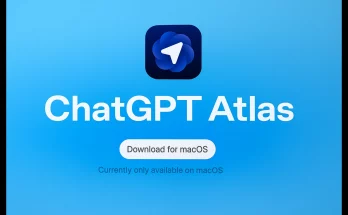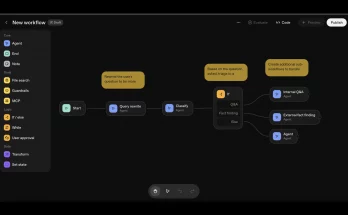Nvidia has officially launched the NeMo Microservices for AI agents, bringing exciting innovations to the AI landscape. This initiative builds on the momentum from last year’s discussions about Nvidia’s powerful Blackwell datacenter GPUs and the introduction of Nvidia Inference Microservices (NIMs). These offerings provide companies a prepackaged enterprise-grade software stack that acts like a virtual co-pilot, enabling them to incorporate bespoke AI functionalities into their applications.
The Evolution of NIMs
Throughout 2024, Nvidia expanded on this concept, showcasing the NIM Agent Blueprints at the Hot Chips conference. This rollout included reference AI workflows and sample applications that featured not only NIMs but also partner microservices, creating a robust resource pool for developing and deploying custom Generative AI applications.
Nvidia emphasized the importance of a NeMo-based framework designed to foster a “data flywheel” effect—a continuous cycle of learning where custom AI applications evolve by interacting with enterprise data and user experiences. Collaborations with major firms such as Accenture, Deloitte, and Quantiphi aim to leverage NIM Agent Blueprints and NeMo microservices to build tailored AI solutions for clients.
The Data Flywheel Concept
The data flywheel serves as a cornerstone of generative AI, emphasizing that continuous data input is crucial for systems to remain relevant. According to Joey Conway, Nvidia’s Senior Director of Generative AI Software for Enterprise, effective models not only require data to function but must continually update to sustain productivity and reliability.
- Continuous Data Flow: AI systems need a persistent supply of inputs.
- Model Improvement: The ongoing influx helps AI agents grasp the context better.
- Broader Impact: Efficient AI can become invaluable resources for the estimated billion workers globally.
Nvidia’s NeMo microservices, integrated within the company’s AI Enterprise software platform, facilitate this data chain, starting with NeMo Curator. This tool allows organizations to process scalable data for further training and customization, ensuring that models evolve with changing enterprise data.
NeMo Architecture
The Nig framework employs various cutting-edge techniques:
- NeMo Customizer: Advanced training techniques to update models efficiently.
- Low-Rank Adaptation: Training strategies that reduce memory demands while improving processing.
- NeMo Evaluator: Ensures that AI agents effectively gain new skills and do not regress over time.
- NeMo Guardrails: Helps to ensure safety, security, and content compliance.
- NeMo Retriever: Maintains accuracy and facilitates numerous interactions seamlessly.
NeMo vs NIM Responsibilities
Conway clarifies that while NIMs focus on inference deployments—running models where questions are processed and responses generated—NeMo is tasked with enhancing these models through data preparation, training, and evaluation.
High-profile partnerships are also emerging. For instance, AT&T, in collaboration with Arize and Quantiphi, developed an AI agent capable of efficiently processing an extensive knowledge base. At the same time, Cisco is building a coding assistant using NeMo microservices, achieving remarkable speed and reducing errors significantly.
Support for Multiple Models
Nvidia’s microservices are compatible with a variety of models such as:
- Meta’s Llama
- Google Gemma
- Mistral
- Microsoft’s Phi collection
Backing from companies like Cloudera and Datadog enhances NeMo microservices, and developers can leverage frameworks like LangChain and Deepset within these offerings. Furthermore, enterprises can utilize NeMo Retriever microservices alongside Nvidia’s AI Data Platform from various renowned storage solutions providers.
The Future of NeMo Microservices
The landscape for NVIDIA’s microservices continues to evolve, with Conway expressing aspirations for notable industry advancements. He suggests that as these microservices operate similarly to Docker containers, leveraging orchestration technologies like Kubernetes will form a crucial part in the path ahead.
As Nvidia pushes forward, it aims to enhance the tools available and inspire greater activity in this emerging domain. The integration of Nvidia NeMo microservices into enterprise systems represents a significant step toward optimizing AI applications and ensuring they evolve in line with ongoing user and business needs.



